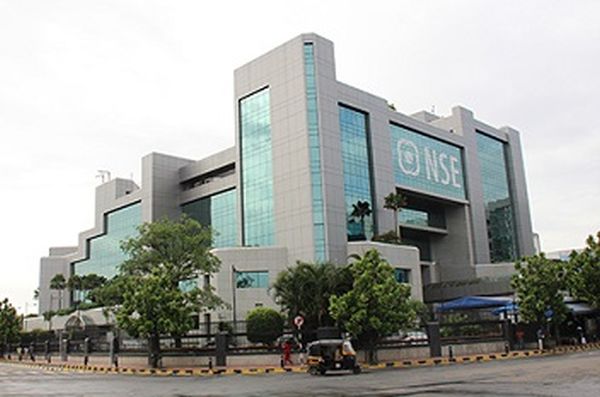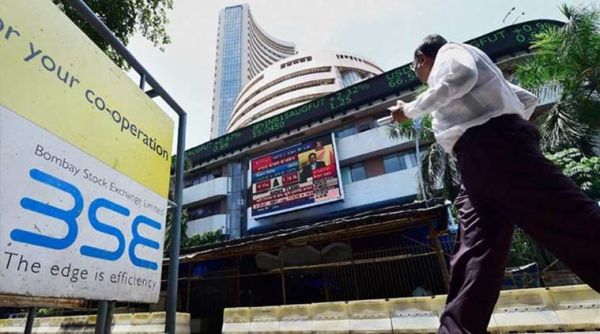
by admin | May 25, 2021 | Books
 By Ravi Dutta Mishra,
By Ravi Dutta Mishra,
Book: Mastering the Market Cycle; Author: Howard Marks, Publisher: Hachette India; Pages: 315; Price: Rs 699
In his new book “Mastering the market cycle”, Howard Marks, one of the most successful investment managers, attempts to explain what makes and breaks the market and why economics and business never move in a straight line.
Mark’s client memos are widely read by professionals in the field. He previously wrote “The Most Important Thing”, published in 2011, consisting of 20 investment insights.
In “Mastering the Market Cycle”, he focuses on investor behavior which, according to him, is the key to understanding the highs and lows of a market cycle.
One of the main points Marks asserts is that despite financial facts and figures being the basis of how markets move, this is “only a starting point”.
“People’s decisions have great influence on economics, businesses and market cycles. In fact, economics markets consist of nothing but transactions between people. And people don’t make their decisions scientifically.”
Marks compares investors to electrons on another occasion, borrowing from physicist Richard Feynman’s observation: “Imagine how much harder physics would be if electrons had feelings!”
“That is if electrons had feelings, they couldn’t be counted on to always do what science expects of them, so the rules of physics would work only some of the time,” says the author.
Investors are portrayed as “economic men” but when it comes to taking a decision, Marks says the market spends little of its time calmly weighing financial data and setting prices free of emotionality.
He uses the adage, “markets fluctuate between greed and fear,” to explain that the fundamental reason behind the fluctuation is because people oscillate between greed and fear. This theme of deciphering investors behavior runs across the book and is the heart of how he explains the market cycle.
Based on his memos and experiences over the years, Mark’s book has a great deal to offer for investors and market enthusiast from around the globe. The back cover carries a compliment from Warren Buffet: “When I see memos from Howard Marks … I always learn something.”
Investment, Marks says, is like the choosing of a lottery winner. Both are determined by a ticket being pulled from a bowlful of tickets. The superior investors according to the author, are people who have a better sense of which tickets are in the bowl, or whether it’s worth participating in the lottery.
Howard’s book is not just for the people who understand trading or for experts who deal with market cycles. It can be enjoyed with a fundamental understanding of economics and business but could have been better with fewer repetitions.
However, to single out a niche audience for whom “Mastering the Market Cycle” is a must read are people interested in behavioral finance.
The book may inspire an Indian expert to explain the market cycles taking the readers through the Dalal Street and the 1991 balance of payment crisis in India than Wall Street and the 2008 financial crisis that originated in the US, as Marks says in this book.
(Ravi Dutta Mishra can be rached at ravi.m@ians.in)
—IANS

by admin | May 25, 2021 | Banking, Economy, Markets, News
 Mumbai : A drop in oil prices, strengthening rupee and pick up in domestic macros provided a positive momentum to the major indices which rose for the fifth straight session on Monday.
Mumbai : A drop in oil prices, strengthening rupee and pick up in domestic macros provided a positive momentum to the major indices which rose for the fifth straight session on Monday.
Global factors such as broadly positive Asian markets also lent support to the upward trajectory.
“Asian stocks traded higher ahead of the US Federal Reserve meeting this week while US stocks dropped sharply on Friday after a batch of weaker-than-expected economic data out of China and Europe sparked fresh worries of slowing global growth,” said Abhijeet Dey, Senior Fund Manager-Equities, BNP Paribas Mutual Fund.
Index-wise, the S&P BSE Sensex settled 307.14 points higher at 36,270.07 points and the NSE Nifty50 gained 82.90 points to close at 10,888.35 points after touching a high of 10,900.35 points.
However, broader market indices like the BSE Mid-cap and Small-cap gained lesser than the barometer Sensex.
In terms of currency, the Indian rupee strengthened to 71.55 per US dollar from its previous close of 71.90.
Said Geojit Financial Services Head of Research Vinod Nair: “Market extended gains led by a strong rupee backed by narrowing trade deficit and inflow of foreign funds.
“Drop in oil prices, strengthening rupee and pick up in domestic macros are providing a positive momentum to the market. However, global market witnessed selling ahead of two days FOMC (Federal Open Market Committee) meet starting from tomorrow.”
Consequently, investors will remain cautious over the possibility of any impending hike in the US interest rates which can potentially drive away Foreign Portfolio Investors (FPIs) from emerging markets such as India.
On the investment front, Foreign Institutional Investors (FII) off-loaded shares worth Rs 60.95 crore on Friday while Domestic Institutional Investors (DII) sold stocks worth Rs 76.84 crore, provisional data from the BSE showed.
“Technically, with the Nifty rallying higher for the fifth consecutive session, the bulls remain in control. Further upsides are likely once the immediate resistances of 10,941 are taken out,” said HDFC Securities’ Retail Research Head Deepak Jasani.
“Crucial supports to watch for any weakness are at 10,816.”
Sector-wise, finance counters gained 0.98 per cent while energy shares rose over 2 per cent, followed by metal, oil and gas, and power stocks gained over 1 per cent.
In contrast, IT and Teck (technology, entertainment and media) stocks ended lower.
Tata Motors (DVR) closely followed by Tata Motors gained the most among the 30-stock on Sensex. The shares of the automobile major Tata Motors settled over 4 per cent up after news that its subsidiary Jaguar Land Rover will go for cost-cutting measures.
It was followed by Power Grid, HDFC and Coal India which advanced in the range of 2 to 3.5 per cent.
In contrast, Kotak Mahindra Bank lost 2.50 per cent. Infosys and Bharti Airtel lost in the range of 1 to 2 per cent.
—IANS

by admin | May 25, 2021 | Business, Economy, Emerging Businesses, Investing, Markets, News, Property
 By Rituraj Baruah,
By Rituraj Baruah,
New Delhi : After four consecutive years of slump and low demand in the real estate sector, market participants believe 2018 will be a year of revival as the sector has finally shed the impact of demonetisation, Goods and Services Tax (GST) and the implementation of the Real Estate Regulatory Act (RERA).
Business stakeholders say the government could do its bit to push the real estate sector forward by giving it an industry or infrastructure status, which would help lower the cost of funds for developers and reduce prices for consumers.
Although demand is not bullish, the sector is rising from its trough, with unsold inventory slowly finding consumers, they say.
“Earlier there were around 600,000 units unsold. Now that’s down to about 450,000 units in the country,” said Narasimha Jayakumar, Chief Business Officer at 99acres.com , a property advisory website.
“We are quite optimistic about the whole sector in the next 12 months. I think it’s going to increase…it’s going to grow,” Jayakumar told IANS.
Amit Modi, Vice President, Credai Western Uttar Pradesh, said: “In 2017-2018, according to reports from markets such as Mumbai, Delhi and Bengaluru, there is an increment of 30 per cent in sales compared with 2016-2017.” Credai is the apex body representing real estate developers.
Modi, who is also the Director of the real estate company ABA Corp, said there are instances of rise in prices.
“In one of my projects, which is in the premium segment, we started selling at Rs 3,500-Rs 4,000 per square foot four years back, but (now) the price in our project is more than Rs 6,500 per square foot. In some units we have touched the price of Rs 7,000,” he added.
Online search for properties are also on the rise, said Jayakumar. “There are several examples we are seeing… there is 50 per cent growth in searches. There has been a 45-50 per cent growth in queries for buying,” he said.
However, although searches and research regarding properties have risen from September onwards, the process of concluding a sale was still slow, said Jayashree Kurup, Head of Content and Advice at magicbricks.com .
“In January this year, the market was fairly active from the end-user side before a marginal slowdown in mid-February,” Kurup told IANS.
“In the last two-three weeks we have seen an uptick again and I think it is a very slow and steady market.”
Talking about the demand for apartments, the stakeholders said the trend is changing from buying by investors to end-users. “Investors used to earlier buy 50-60 per cent, that number is now down to 8-10 per cent,” Jayakumar said.
“In many cases the difference between the rent and EMI (equated monthly installment) is only 15-20 per cent, particularly with the credit-linked subsidy scheme, depending on the prices of property and the loan tenure, making it very attractive for the youth to buy,” he added.
Real estate players felt, apart from the market dynamics, the sector is also seeing structural changes and consolidation among small players, largely after the implementation of the RERA and its mandate to establish state units.
Although the introduction of RERA disturbed the status quo in the market, which was largely unorganised and unregulated, its proper and complete implementation would clear up the sector of unscrupulous players and bring about confidence among buyers, they say.
Stakeholders, however, expressed concern about not getting industry status for the sector.
“Industry status means that you can get access to lower-cost bank financing. You don’t have to go to an NBFC (non-banking financial company), other private financing or private equity, which are much more expensive,” Jayakumar said.
Modi emphasised that to reach the target of housing for all, industry status was required.
“(With industry status) the sector will be more organised, one window clearance will be there, and cheap finance will be there, which will definitely stabilise this business and also fulfil the Prime Minister’s dream of housing for all by 2022,” he said.
Although the government provided the industry or infrastructure status to affordable housing projects in Budget 2017-18, it does not seem to be budging on the demand of real estate players for the status to be extended to the whole real estate sector.
Going ahead in the year, the market players also believe the rental housing policy will play a significant role in the sector.
The policy, which is currently at consultation stage and will be sent for cabinet approval after due diligence, is aimed at alleviating the housing shortage in urban areas by encouraging renting of homes.
(Rituraj Baruah can be contacted at rituraj.b@ians.in )
—IANS

by admin | May 25, 2021 | Economy, Markets, News
 By Porisma P. Gogoi,
By Porisma P. Gogoi,
Mumbai : Release of key domestic macro-economic data, combined with global market volatility and movement of funds, are expected to dictate the direction of the Indian equity markets during the week ahead, say market analysts.
“Apart from other developments on the domestic front, the Indian equity markets would seek direction from global markets as the results (earnings) season is almost over,” D.K. Aggarwal, Chairman and Managing Director of SMC Investments and Advisors, told IANS.
“Also, the movement of funds and crude oil prices are expected to influence the market sentiment next week,” he added.
Provisional figures from the stock exchanges showed that last week foreign institutional investors (FIIs) sold off scrips worth Rs 5,781.98 crore, while domestic institutional investors (DIIs) purchased scrips worth Rs 5,972.69 crore.
Figures from the National Securities Depository (NSDL) revealed that foreign portfolio investors (FPIs) off-loaded equities worth Rs 3,054.94 crore, or $468.06 million, from February 20 to 23.
“On the macro front, fiscal deficit data, core sector data for January and estimates for October-December GDP (gross domestic product) data will be announced on February 28. Automobile sales data by automakers and Nikkei Manufacturing PMI (Purchasing Manager’s Index) for February will be announced on March 1,” Arpit Jain, Assistant Vice President at Arihant Capital Markets, told IANS.
In addition, the Central Statistics Office (CSO) is expected to release the macro-economic data points of Index of Industrial Production (IIP) on February 28.
According to Vinod Nair, Head of Research, Geojit Financial Services, investors will wait for fresh triggers to get direction in the week ahead.
“As per the quarter results, the corporate earnings have started to pick up but concern on inflation and hike in interest rate may add pressure on the near-term valuation,” said Nair.
“The sustainability in the global market is another key factor which may influence domestic investors’ sentiments,” he added.
Analysts were optimistic that the upcoming week could witness a recovery of the key indices from lower levels.
“Nifty and Sensex made a strong come-back post the bad expiry series for February, closing above the 10,490 and 34,000 marks, respectively, on the first day of March derivative series on February 23,” said Dhruv Desai, Director and Chief Operating Officer of Tradebulls.
“Therefore we believe that the final week of February should see a termination of the down move and a reversal sign is in the offing which could turn the tide in favour of bulls soon,” Desai told IANS.
Last week, the key Indian equity indices bounced back from their lows to close with humble gains on value buying by investors after three weeks of consecutive losses.
On a weekly basis, the barometer 30-scrip Sensitive Index (Sensex) of the Bombay Stock Exchange (BSE) edged higher by 131.39 points or 0.39 per cent to close at 34,142.15 points.
The wider Nifty50 of the National Stock Exchange (NSE) closed trade at 10,491.05 points — up 38.75 points or 0.37 per cent from its previous week’s close.
The equity markets will remain closed on March 2 (Friday) for Holi.
(Porisma P. Gogoi can be contacted at porisma.g@ians.in )
—IANS

by admin | May 25, 2021 | Economy, Markets, News
 Mumbai : Positive global indices, coupled with healthy buying in capital goods, auto, banking, healthcare and metal stocks, lifted the key Indian equity indices on Monday.
Mumbai : Positive global indices, coupled with healthy buying in capital goods, auto, banking, healthcare and metal stocks, lifted the key Indian equity indices on Monday.
Market observers said investors awaited the retail and industrial inflation data due to be announced in the evening which is expected to give direction to the central bank’s next course of action on raising interest rates.
The wider Nifty50 of the National Stock Exchange held the 10,500-mark and closed higher by 84.80 points or 0.81 per cent at 10,539.75 points.
On the BSE, the barometer 30-scrip Sensitive Index (Sensex) closed at 34,300.47 points — up 294.71 points or 0.87 per cent from its previous close.
The Sensex touched a high of 34,351.34 points and a low of 34,115.12 points during the intra-day trade.
The BSE market breadth was bullish as 2,050 stocks advanced as against 764 declines.
In terms of the broader markets, the S&P BSE mid-cap index edged higher by 1.31 per cent and the small-cap index by 1.60 per cent.
“Markets bounced back on Monday after the correction seen on last Friday. The gains came on the back of strong global cues,” Dhruv Desai, Director and Chief Operating Officer of Tradebulls, told IANS.
“Major Asian markets closed on a positive note, barring the Hang Seng index. European indices like FTSE 100, DAX and CAC 40 traded in the green,” he added.
Last week on Friday, the key equities had plunged into the negative territory amid a global sell-off, with the Sensex shedding 407.40 points or 1.18 per cent and the Nifty50 was down 121.90 points.
Vinod Nair, Head of Research, Geojit Financial Services, said: “On Monday, market reversed from previous day’s losses owing to positive global cues and expectation of marginal decline in January CPI (Consumer Price inflation) inflation today.”
“Mid and small-caps outperformed the benchmark indices as investors start accumulating the over sold stocks. The economy is forecast to improve in the long-term with strong earnings growth which is likely to provide a safety to the ongoing consolidation,” he added.
The Central Statistics Office (CSO) is slated to release the macro-economic data points of the CPI and IIP (Index of Industrial Production) on Monday evening.
On the currency front, the Indian rupee strengthened by nine paise to close at 64.31 against the US dollar from its previous close at 64.40.
In terms of investments, provisional data with the exchanges showed that foreign institutional investors sold scrips worth Rs 814.11 crore while domestic institutional investors bought stocks worth Rs 1,342.70 crore.
Sectorwise, the S&P BSE capital goods index surged by 317.88 points, followed by auto index by 266.55 points and banking index by 197.62 points.
On the other hand, the S&P BSE IT index edged lower by 52.47 points and the Teck (technology, media and entertainment) index by 22.59 points.
Major Sensex gainers on Monday were: Tata Steel, up 4.22 per cent at Rs 712.50; Yes Bank, up 2.89 per cent at Rs 334.95; Power Grid, up 2.51 per cent at Rs 198.05; IndusInd Bank, up 2.12 per cent at Rs 1,686.45; and Hero MotoCorp, up 1.94 per cent at Rs 3,615.
Major Sensex losers were: State Bank of India, down 2.67 per cent at Rs 288.50; Infosys, down 0.72 per cent at Rs 1,103.80; ITC, down 0.53 per cent at Rs 269.85; Mahindra and Mahindra, down 0.43 per cent at Rs 746.70; and ICICI Bank, down 0.23 per cent at Rs 326.
The Indian equity markets will remain closed on Tuesday (February 13) for Mahashivratri.
—IANS





